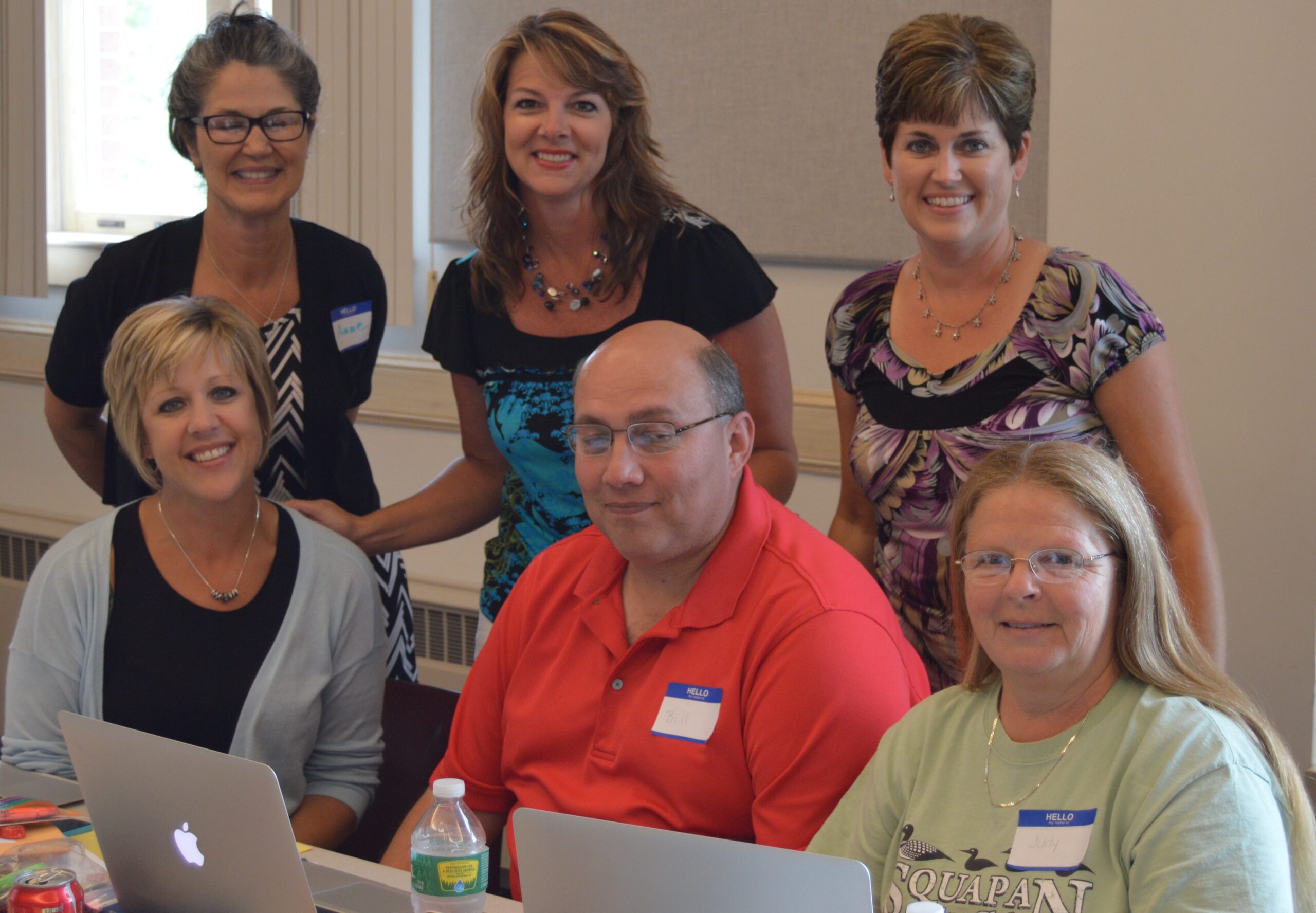
The Maine Department of Education held a “Pathways to Proficiency” workshop last week at UMPI as part of their 2015 Summer Literacy Institute. The two-day program was part of the department’s efforts to help educators statewide understand practical approaches to proficiency-based teaching and learning.
Teachers were instructed Aug. 4-5 in how to take a book, which would normally be studied in one subject like English/language arts, and carry the material to cover a variety of subjects. Bill Guerrette, eighth-grade teacher at Presque Isle Middle School, used an example of reading a dystopian novel. Traditionally the book would be read in ELA exclusively, but the same material could be used to talk about utopian societies and about our own country’s constitution. The aim is to encompass as many lessons as possible with one anchor.
“We’re looking at hitting the standards, but also too, looking at the rigor of the instruction,” explained Guerrette. “It’s forcing us to look at the big picture.”

Pine Street teachers work on implementing new strategies to their lesson plans. From left are Maranda Donovan (2nd grade teacher), Charlotte Ala (1st grade teacher) and Amy Daniels (Pre-K teacher).
(Shannon Kornachuk)
Lee Anne Larsen, the Maine DOE specialist who led the elementary-level instruction, explained that traditionally education has been gauged by standardized testing.
“In the assessing, we haven’t necessarily made sure they’ve (students) mastered those standards,” Larsen explained. The proficiency-based approach hopes to remedy that by establishing that students have mastered one objective before moving on to the next.
“You don’t want somebody framing your house that ‘kind of’ knows what they’re doing,” said Morgan Dunton, the DOE specialist for secondary education. “You want someone who knows for certain how to frame a house.”
Seventy Aroostook County teachers came from 12 different school systems to attend the workshop. Larsen and Dunton led the teachers through several methods and examples to help them implement these new strategies in their lesson plans.
“You can do a whole lot of lessons through literacy. You can teach a science lesson while also nurture in reading. It doesn’t have to be one or the other,” said Amy Daniels, pre-K teacher from Pine Street Elementary.
“What we’ve learned over the past two days is that there are a lot of different things you can do and (a lot) of literature you can pull from and all kinds of things you can do with it,” she said.
The importance of teaching math and ELA in the schools, particularly at the elementary level, has left other subjects in the shadows, explained Larsen. Science, social studies, geography, health, art and music are all subjects that have either become extinct from primary education or have a small window of time in the course of a week to be addressed. Proficiency based education allows teachers the opportunity to infuse those lesser-known subjects within their main subject instruction.
Larsen held up three examples of literature as teaching tools. “A Snowy Day”, the Caldecott Award picture book by Ezra Jack Keats, was used as a way of addressing reading, art and science all in one lesson.
The approach works well for secondary education as well.
“Instead of keeping things (subjects) isolated,” explained Guerrette, “we’re pulling things together so that in the end, the kids won’t have just read a book; we’ll have talked about current events, we’ll have talked social studies, and we’ll have talked about this literature book.”
“I think it’s going to get kids interested in (the subject matter),” said Daniels, “and more fun for the teachers too because it opens doors up for us to pick and choose some books and what we want to do with it.”







